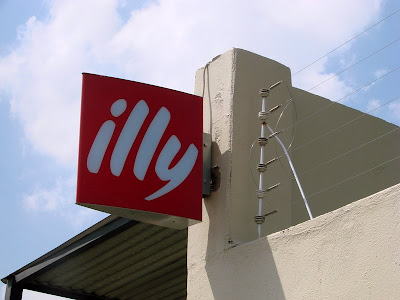When I decided I'd meet up with Hitesh Mehta in South Africa to help out on a case study for his forthcoming book, Authentic Ecolodges, he suggested I spend a few days on the front end in Jo'burg. I'd been interested in opening up the market for One Mango Tree products in South Africa, so I booked four nights ahead of my trip with Hitesh to meet with owners of boutiques and yoga studios interested in carrying our line.
Jo'burg has somehow become synonymous with violent crime. I'd envisioned a dark, gray, concrete city - something akin to City of God. In complete contrast to this, I arrived in Jo'burg on the first days of autumn, and quickly noticed how green the place is. There are trees everywhere. I met my friend Stephanie at the airport, and we took a cab to Ginnegaap Guest House in Melville, an area recommended by a South African friend. As we drove through the city and surrounding suburbs, everything looked so familiar that my mind kept racing, trying to place the landscape and architecture with places I've been in the United States and Europe.
I was struck by many things in South Africa, but more than anything I was confused by the whole concept of fear. Flying into OR Tambo Airport, the suburbs of Jo'burg looked a bit like Beverly Hills from the sky - huge mansions with pools and rolling acreage - but you can't miss the thin outline of a wall around every residence. The city is filled with gorgeous architecture and landscape, but the majority of it is well-hidden behind tall walls with electrical fencing across the top. Ginnegaap itself is an urban oasis, nestled behind a clay-colored wall. Our key ring had no less than 8 keys, and when we came in at night, we used all 8 to un-lock the gates that lie between the 4th Avenue and our room. On the first night we stayed in past dark, only to realize that the place had been locked down. While we were eager to explore the area, the many gates convinced us that maybe it wasn't the safest thing to do.
On driving through the city center days later, I saw the concrete and gray city that I'd envisioned. The fear in South Africa makes sense when you combine the still-present (though not forced) segregation and xenophobia. The city center houses much of the unemployed population, which looks like a lot of Nigerian men loitering on street corners. Unemployment is at 30% in SA. This, in contrast to the jacaranda-lined streets of Houghton, where Nelson Mandela now resides; the incredibly smooth and modern highways that criss-cross the nation; the beautiful golf courses; the strip malls that line the suburban roads.
We visited Soweto, and even there I was surprised to find such a developed area. The separation was the more appalling piece, and the fact that the race lines are still so clearly drawn in where people live. One night at dinner, Steph and I talked to two South African men. They shared the story of their recent adventure into Soweto. They'd befriended a black South African woman, who invited them to a restaurant in Soweto. The recalled the intense fear they'd felt as they drove into the area, and how they'd so much enjoyed the food and atmosphere in the restaurant. When we asked if they'd ever go back, their response:
"No. No way."

No comments:
Post a Comment